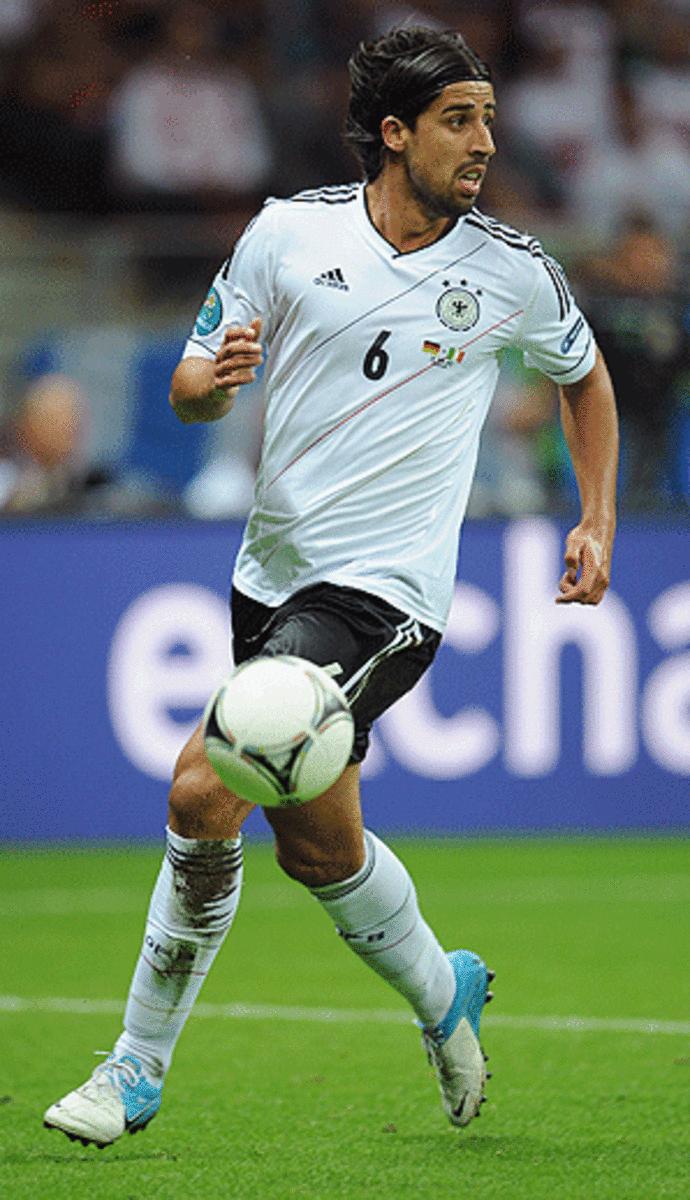
Italy-Spain Euro final promises to be clash of polar opposites
The final was supposed to be a battle between the two schools of proactive soccer. On the one side Spain, the increasingly cautious protectors of the ball, a side that has used its mastery of possession to prevent the opposition from playing; on the other, Germany, having moved away from the reactivity of the last World Cup, playing in a more carefree way. It's a battle, in a sense, between the bloodless purists and the more visceral entertainers.
Except Germany took too many risks and defended atrociously against Italy, who, if it hadn't been dreadfully reckless in the second half, would have won its semifinal far more comfortably. The problems hinted at earlier in the tournament in the Bastian Schweinsteiger-Sami Khedira combination were exposed again. Khedira has become a more complete player, but that has complicated his partnership with Schweinsteiger. Previously, Khedira sat and Schweinsteiger went; in this tournament, they had to work out an understanding whereby one went forward and the other would cover; far too often both went marauding forward: It was like a German version of England's eternal Steven Gerrard-Frank Lampard conundrum.
Italy will not find Spain so accommodating in the final -- although it's not clear exactly what squad it will face. In fact one of most intriguing aspects of the final is that both sides have used at least two distinct tactical set-ups during the tournament and it's not certain which either will use. When the sides met in Gdansk in the group stage, Spain fielded a strikerless 4-3-3 and Italy a 3-5-2.
In the four games since, Spain has twice gone in with Fernando Torres and once with Alvaro Negredo as a lone striker and once more used Cesc Fabregas as a false nine. The strikerlessness has been much criticized, the suggestion being that it encourages ball circulation rather than penetration but, while there may be some truth to that, two things must be considered. First of all, Vicente Del Bosque has insisted on control. Take hold of possession, refuse to give it back and only one team can score: have 25 chances and allow the opposition five and there is risk; have five chances and deny the opposition any and there is none.
And secondly, Spain has looked no more penetrative with a forward on the pitch. Fernando Torres' best game -- other than against a hapless Ireland - came against Italy when he came off the bench with 16 minutes remaining against Italy. His pace late in games makes him a useful option, but against sides that defend deep, it's not clear what he adds. Fernando Llorente's aerial ability might draw deep defenses out, but Del Bosque doesn't seem to prefer him; presumably reasoning that the crosses and direct play that would get the best out of him would sacrifice the control by which he is so obsessed. Alvaro Negredo offers a halfway house, but he was poor against Portugal. So the likelihood is that Spain will start the final with Fabregas again as the false nine.
Italy dealt with that relatively comfortably in the first game, presently Spain developing the "profundidad" Del Bosque had admitted the team has lacked at times. The term literally means "depth," but refers to runners coming from deep, breaking the marking structure of the opponent. When the ball is moved sideways it's relatively easy for massed defenses to frustrate passing sides; what punctures defensive lines are plays arriving at pace onto passes -- as Fabregas did when scoring Spain's equalizer in that first game.
The back three Italy played helped in that regard. Daniele De Rossi, more naturally a midfielder anyway, could step forward to track Fabregas. More vitally, the two wing-backs, Emanuele Giaccherini and Christian Maggio, caused problems for Spain when they had the ball. Spain's system is narrow: Who goes to close a wing-back? In theory it probably should be one of the two wide forwards (David Silva or Andres Iniesta), but in practice they end up playing so far inside that they can't recover. So then it comes down to the full-backs, but neither Alvaro Arbeloa, nor Jordi Alba can press too high for fear of leaving the two central defenders two-on-two against Antonio Cassano and Mario Balotelli.
From that point of view it would make sense for Italy to revert to the 3-5-2 it used in the opening two matches, but it seems now that was a temporary measure while Andrea Barzagli returned to fitness. The 4-1-3-2 has been working well -- the back four solid and the midfield three (including Riccardo Montolivo almost as a defensive playmaker) creating space in which Andrea Pirlo, stealthily wandering about the pitch, can create. That could make Italy predictable, but the versatility of the front two, each willing to drop deep or pull wide, means it always seems to have forward options. Even if Italy did return to a back three, it's highly unlikely De Rossi would be used as part of it. He and Claudio Marchisio have both been excellent as rampaging ball winners protecting Pirlo and memories of how badly exposed he was against Torres must caution against a repeat.
So the probability is that Italy will pack eight men behind the ball most of the time, surrendering the flanks and not being overly bothered whether Spain has space to cross. The game is likely to be extremely congested in central areas but Italy's willingness to get the ball forward quickly, to use the explosiveness and invention of Balotelli and Cassano means that it should never sink into the sort of torpor that afflicted the Spain-Portugal semi-final.
In a sense it's a classic clash of opposites: The proactivity and possession-game of Spain against the reactivity and counter-attacking of the Italians.





